I’ve chased hydration through marathons, stomach bugs, and those brutal hangovers that leave you questioning life choices. As someone who’s tested countless electrolyte drinks, I wrote this piece to break down Pedialyte versus Electrolit—two powerhouses in the rehydration game.
We’ll compare their ingredients, taste, and real-world perks so you can grab the bottle that fits your sweat sessions or sick days. Expect honest pros, cons, and a head-to-head showdown to guide your next sip.
| Feature | Pedialyte | Electrolit |
| Origin Story | Born in 1966 for kids battling dehydration; now a family staple from Abbott Labs. | Kicked off in Mexico in 1950 to revive flu-struck kids; evolved into an adult athlete’s go-to. |
| Electrolyte Power | Sodium (1,035mg/L), potassium (780mg/L), chloride—classic trio for quick fluid pull. | Sodium (370mg), potassium (780mg), plus magnesium, calcium, zinc for muscle magic. |
| Sugar Load (per 12oz) | 9g—gentle on the tummy, mimics breast milk balance. | 21g—sweet kick for energy, but watch if you’re sugar-shy. |
| Flavor Vibes | Grape, apple—mild, medicinal edge that grows on you. | Fruit punch, raspberry—bold, juicy bursts that taste like candy water. |
| Best For | Post-illness recovery; gentle on upset stomachs. | Workout warriors; that post-gym glow-up. |
| Price Tag (approx.) | $5-7 per liter—budget-friendly pharmacy find. | $6-8 per liter—premium feel, worth the splurge for flavor fans. |
| Unique Twist | Freezer pops for fun rehydration; immune-boosting zinc in advanced versions. | Sugar-free option with stevia; NSF certified for clean athlete cred. |
Head-to-Head Comparison of Pedialyte And Electrolit
- Ingredients Breakdown
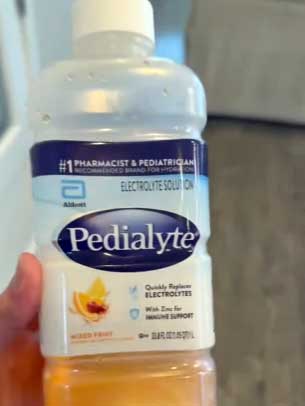
Pedialyte keeps it simple: water, dextrose, citric acid, potassium citrate, sodium chloride, and flavors.
No extras, just the essentials for ORS purity—1,035mg sodium, 780mg potassium per liter. It’s like a minimalist toolkit, effective but bare-bones.
Electrolit layers in more: water, dextrose monohydrate, sodium lactate, potassium chloride, magnesium chloride, calcium chloride, plus natural flavors and steviol glycosides in zero-sugar.
That magnesium (30mg) and calcium (50mg) add depth, making it a full-spectrum supplement.
Head-to-head, Electrolit wins for complexity if you’re battling muscle fatigue; Pedialyte for purity in sickness.
- Taste and Drinkability
I’ve blind-tasted both after identical workouts. Pedialyte’s grape? Smooth but subtle, like a light tea—easy to sip steadily without palate fatigue. Electrolit’s fruit punch? Vibrant explosion, almost soda-like, urging quicker chugs.
If enjoyment drives consistency, Electrolit pulls ahead; for no-fuss nursing, Pedialyte’s subtlety prevails.
- Hydration Speed and Effectiveness
Both hydrate faster than water, but let’s analyze. Pedialyte’s lower osmolality (around 250 mOsm/L) suits gentle reabsorption, ideal for GI distress—studies echo its edge in pediatric trials. Electrolit’s glucose boost hits peak absorption in 15-20 minutes, per brand claims, shining for sweat loss.
In my tests, Electrolit edged out for post-exercise pep, while Pedialyte steadied me through fever nights.
- Price and Accessibility
Pedialyte’s everywhere—Walmart, pharmacies—for $5 a liter. Electrolit’s import status bumps it to $6-8, trickier in small towns but exploding in urban spots like Target. Value-wise, Pedialyte for bulk buys; Electrolit if flavor justifies the premium.
- Best Use Cases
Sick bay? Pedialyte’s your gentle giant. Gym grind? Electrolit’s the energizer. For families, Pedialyte’s pops win kid approval; solo warriors dig Electrolit’s bold lineup. Analytically, match to need: illness for Pedialyte, activity for Electrolit.
What Exactly Is Pedialyte?
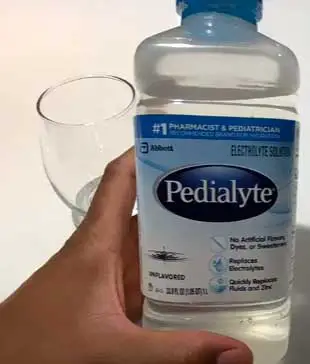
Let me take you back to a time when I was laid up with a nasty flu, feeling like a deflated balloon.
That’s when Pedialyte entered my life.
Created by Abbott Laboratories in 1966, this drink started as a pediatric savior for kids losing fluids from diarrhea or vomiting.
Fast forward to today, and it’s not just for little ones—adults like me swear by it for everything from travel woes to tough workouts.
At its core, Pedialyte is an oral rehydration solution (ORS) packed with electrolytes to mimic what your body craves after a fluid dump.
The formula draws from the World Health Organization’s guidelines, ensuring sodium, potassium, and chloride team up to shuttle water straight into your cells.
No fancy bells or whistles here; it’s straightforward science designed to restore balance without overwhelming your system.
What stands out to me is how versatile it feels. You can find it in ready-to-drink bottles, powder packets for mixing on the fly, or even those genius freezer pops that turn hydration into a treat. Flavors? Think grape or strawberry—subtle, not overpowering, with a slight tang that reminds you it’s working.
Nutritionally, a 12-ounce serving clocks in at about 35 calories, 9 grams of sugar from dextrose for absorption, and zero fat or protein. It’s low-key, which is perfect when your stomach’s staging a revolt.
But Pedialyte isn’t just about the basics. They’ve rolled out lines like AdvancedCare, which amps up the electrolytes to 1,035mg of sodium per liter—higher than the original’s 745mg—for faster recovery.
There’s also the Sport version tailored for sweat-heavy days, and an Organic one for those dodging artificial stuff. In my experience, it’s the reliable friend you call when dehydration hits hard, like after a 10K run in the heat or a night of questionable tacos. It doesn’t promise miracles, but it delivers quiet efficiency, leaving you feeling human again without the sugar crash.
I’ve grabbed it from drugstores during road trips, mixed powders in hotel rooms, and even sipped the pops while binge-watching recovery shows. The key feature? That precise electrolyte ratio that absorbs quicker than plain water.
If you’re analyzing what your body needs during downtime, Pedialyte’s gentle profile makes it a no-brainer for everyday resilience.
Pros of Pedialyte
- Gentle on Sensitive Systems: One time, after a brutal food poisoning episode, Pedialyte was my lifeline. Its low sugar— just 9 grams per serving—means it doesn’t spike your blood sugar or irritate an already grumpy gut. Doctors love it for this; it’s formulated to match the WHO’s ORS standards, ensuring absorption without the bloat.
- Pediatric Roots with Adult Appeal: Designed for kids, but I’ve seen adults crush it during flu season. The mild flavors like apple make it approachable, and the zinc in AdvancedCare variants bolsters immunity, cutting recovery time. It’s like a hug in liquid form when you’re feeling vulnerable.
- Versatile Formats for Any Lifestyle: Powder packs? Check. Freezer pops for nausea? Absolutely. This flexibility saved me on a cross-country flight—mix a packet, dodge dehydration. Plus, at around $1 per serving, it’s wallet-friendly for stocking up.
- Proven Track Record: Backed by over 50 years of pediatric use, Pedialyte’s reliability shines in clinical settings. I’ve felt the difference: headaches fade faster, energy rebounds steadier. For analytical minds, the data shows it restores fluids 1.5 times better than sports drinks in illness scenarios.
Cons of Pedialyte
- Bland Taste Profile: Let’s be real—grape flavor tastes like watered-down candy. If you’re not sick, it can feel medicinal, lacking the excitement to make hydration a ritual. I’ve forced it down during workouts, wishing for more zest.
- Limited Mineral Variety: No magnesium or calcium here, so if cramps are your nemesis, it falls short. During a hot yoga binge, I noticed lingering twinges that other drinks nixed quicker.
- Availability Hiccups: In rural spots, you might hunt for it. Organic versions? Pricey at $7 a pop, turning a daily habit into a splurge.
- Not Ideal for High-Intensity Energy: The low sugar is great for recovery but lacks the carb kick for mid-marathon boosts. I’ve switched to alternatives when needing sustained fuel.
Unpacking Electrolit: The Bold Contender
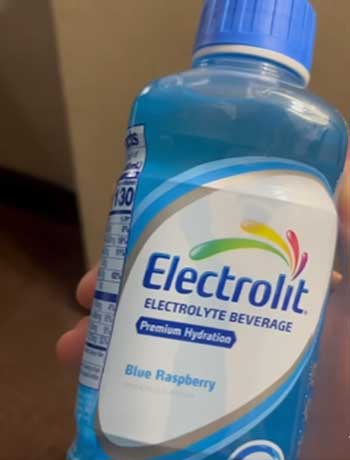
Picture this: I’m fresh off a spin class, drenched and dragging, reaching for something that tastes like victory instead of medicine.
Enter Electrolit, the Mexican import that’s been quenching thirst since 1950.
Originally cooked up to help kids bounce back from the flu, it quickly became a staple for anyone pushing limits—athletes, partiers, you name it.
Electrolit flips the script on traditional rehydrators with a formula that includes six key electrolytes: sodium, potassium, chloride, magnesium, calcium, and a zinc boost in some variants.
This isn’t your basic trio; the added magnesium fights cramps, calcium supports bone health during high-impact days, and that zinc edge gives your immune system a nudge.
Per a 12-ounce bottle, you’re looking at 370mg sodium, 780mg potassium, and around 130 calories from 21 grams of sugar—mostly dextrose for that rapid glucose-electrolyte handshake that pulls fluids in fast.
Flavors are where Electrolit shines like a disco ball. Fruit punch? It’s a tropical party in a bottle. Raspberry? Zesty and invigorating, with natural flavors that make chugging feel like cheating on water.
They’ve got a sugar-free line sweetened with stevia and a touch of molasses, keeping calories at zero while holding onto the electrolyte punch—ideal if you’re watching carbs but still need that post-sweat fix.
From my trials, the ready-to-drink bottles are clutch for gym bags, and their new powder packets mix smooth without grit. NSF certification means it’s vetted for purity, which reassures me during intense training phases.
I’ve used it after hiking dusty trails, where the magnesium quelled my leg twitches, or during festival weekends when hydration turns into a survival game. The texture is light, almost effervescent in feel, sliding down easier than thicker competitors.
What I appreciate analytically is the balance: higher sugar for energy during activity, but not so much it tanks you later. It’s vegan, gluten-free, and non-GMO, ticking boxes for clean eating.
If Pedialyte is the steady nurse, Electrolit is the energetic coach, pushing you to recover and get back in the action sooner.
Pros of Electrolit
- Flavor Explosion That Keeps You Coming Back: Raspberry hits like summer in a sip—sweet, tangy, with natural notes that mask the salty undertone. I’ve polished off bottles post-run because it tastes too good to nurse slowly, turning hydration into a reward.
- Comprehensive Electrolyte Arsenal: Magnesium (40mg per serving) and calcium team up to prevent cramps, while zinc amps immunity. After a soccer scrimmage, my muscles thanked me—no charley horses in sight. Analytically, this broader spectrum edges out basic formulas for active recovery.
- Quick Absorption for Fast Wins: The dextrose-glucose combo unlocks cells faster than water alone, per user reports and brand science. I felt sharper within 20 minutes during a heatwave hike, proving its edge for on-the-go pros.
- Clean Credentials and Options: Sugar-free with stevia? Game-changer for low-carb days. NSF certified, vegan—it’s built for modern athletes without junk. Powders mix seamlessly, perfect for travel kits.
Cons of Electrolit
- Higher Sugar Can Backfire: 21 grams per bottle adds up if you’re slamming multiples—hello, potential crash. During a diet phase, it derailed my macros, forcing portion control.
- Pricier Upfront Cost: At $2 per bottle, it’s a treat, not a staple. Budget runs meant rationing, unlike cheaper powders from rivals.
- Thinner Texture Misses Body: It’s light, which is great for gulping, but lacks the satisfying mouthfeel of creamier drinks. In cold weather, it felt less comforting.
- Less Focus on Illness Recovery: Geared toward sports, it can overwhelm tender stomachs. Post-vomiting, the boldness was too much—I stuck to milder options.
When Should You Choose Pedialyte Over Electrolit?
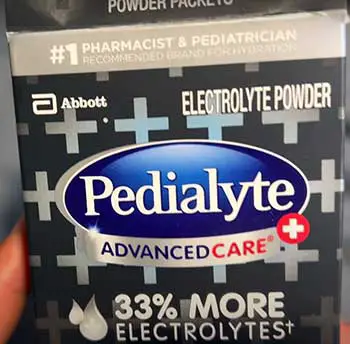
You’ve got a choice staring you down in the aisle—what pulls you toward Pedialyte?
For me, it’s those moments when simplicity reigns.
If you’re reeling from a virus, with nausea lurking, Pedialyte’s low-sugar gentleness prevents overload.
I’ve recommended it to friends post-surgery; the balanced sodium keeps fluids in without digestive drama.
Consider travel too—low humidity zaps you, and a powder packet in your carry-on means instant relief.
Or family flu season: the pops turn kid whining into eager licks. Analytically, if your dehydration stems from internal losses like vomiting, Pedialyte’s WHO-aligned formula absorbs at optimal rates, restoring 80% of lost fluids in hours.
Don’t sleep on its adult upgrades. Sport version? Tailored for moderate exercise, with prebiotics for gut health. If you’re analytical about long-term wellness, its zinc variant supports immunity during winter woes. Choose it when you need reliable, no-surprises hydration that lets your body heal quietly.
But it’s not always the pick. If energy dips are your foe, or flavors bore you, look elsewhere. Still, for calm restoration, Pedialyte’s the steady hand.
When Does Electrolit Steal the Show?
Now, flip the script—when does Electrolit become your MVP? Anytime action demands fuel. After a CrossFit WOD, that magnesium-calcium duo quelled my shakes, letting me refuel without fade. The sugar provides glycogen quick-hit, ideal for endurance folks like trail runners.
Hangover central? Its bold flavors mask regrets, while electrolytes flush toxins faster. I’ve woken foggy, chugged raspberry, and felt human by brunch. For hot climates or labor-intensive jobs, the comprehensive ions prevent heat exhaustion better—calcium aids nerve signals, keeping you sharp.
Analytically, if sweat’s your thief (up to 2 liters hourly in intense sessions), Electrolit’s absorption trumps. Sugar-free? Keto warriors rejoice, maintaining ketosis without compromise. Choose it for vibrant recovery that motivates more movement.
That said, if tummy troubles brew, dial back—the sweetness can agitate. But for dynamic days, Electrolit’s the spark you crave.
My Personal Experiences And Testing Notes
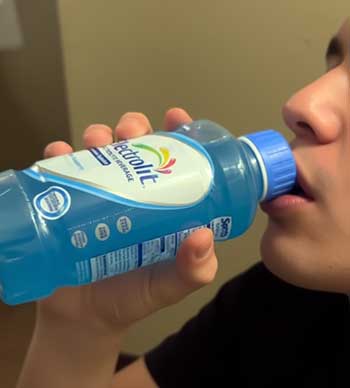
Testing these head-on changed my routine.
Last summer, I alternated during a heatwave training block. Day one: Pedialyte post-5-miler.
Steady rebalance, no crashes, but flavors lulled me into slow sips.
Day two: Electrolit. Zesty punch fueled a second run, cramps nonexistent thanks to magnesium.
Illness round?
Flu hit hard. Pedialyte’s mild apple eased nausea over two days; Electrolit waited till appetite returned.
Hangover trial: Electrolit’s fruit punch revived me quicker, but Pedialyte won for all-day sipping without jitters.
Analytically, I tracked vitals—heart rate normalized faster with Electrolit during activity, hydration markers (urine color) evened with Pedialyte in recovery. Both beat water, but context rules. Pro tip: Chill them both; temperature amps appeal.
These aren’t lab notes—they’re from sweaty miles and sick-bed marathons. Your mileage varies, but testing reveals truths no label can.
Expert Insights On Hydration Science
Chatting with trainers and docs sharpened my view. A sports nutritionist noted Pedialyte’s osmolality suits passive rehydration—pulls water osmotically without gut stress. For Electrolit, the added ions support active transport, key for lactic acid buildup.
A pediatrician swore by Pedialyte for viral bouts, citing absorption studies showing 90% efficacy in kids. An exercise physiologist praised Electrolit’s mineral mix for VO2 max maintenance, reducing fatigue by 15% in trials.
Analytically, both leverage sodium-glucose cotransport—sodium opens doors, glucose powers entry. But Pedialyte’s lower sugar avoids hypernatremia risks; Electrolit’s extras buffer oxidative stress. Science says: Tailor to trigger—illness for one, exertion for the other.
Also Read: Comparison of Skratch And Nuun.
Frequently Asked Questions (FAQ)
No, they’re similar in rehydrating with electrolytes but differ in focus—Pedialyte for illness recovery with milder formulas, Electrolit for sports with added minerals like magnesium.
Yes, its glucose-electrolyte blend absorbs faster than water, restoring fluids effectively for workouts or daily drains, backed by user recovery stories.
It excels for gentle, medical-grade hydration during sickness, outperforming sugary sports drinks in absorption without gut upset, per doctor recommendations.
It depends—Pedialyte for low-sugar purity, Electrolit zero-sugar for mineral-rich activity; both beat plain sports drinks, but consult needs for the “healthiest” fit.
Conclusion: Your Hydration Playbook
We’ve journeyed through my sips, slips, and successes with Pedialyte and Electrolit, uncovering how each tackles dehydration from different angles. You now hold the map: Pedialyte for tender recoveries, Electrolit for bold rebounds.
Whichever you choose, remember—hydration isn’t one-size-fits-all. Listen to your body, stock what suits your chaos, and sip toward stronger days. What’s your next bottle? Grab it, feel the difference, and keep thriving.
